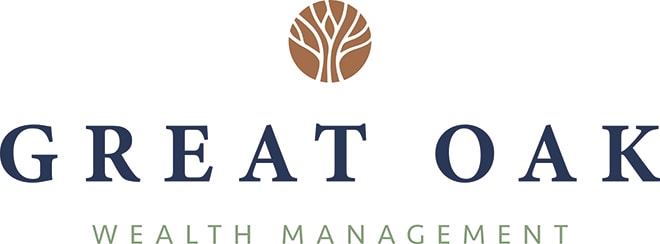The FIRE movement is a trend that has gained significant traction in recent years. The traction is primarily thanks to the movement’s broad-brush appeal to the masses who prioritize flexibility in their work-life balance. The concept of striving for financial independence, retire early (FIRE) is attractive to those who don’t want to be tied to a corporate desk for their entire career. “Retire early with financial independence.” The FIRE movement nailed its branding; it is hard to argue with that tagline. The reality is, achieving the lifestyle that the FIRE movement promises is only possible for people with particular circumstances.
The concept isn’t all pie in the sky, dreams, and fluff; it is based on a structured, mathematically based savings strategy. Just like in the financial planning process, you must start with your needs. The FIRE rule of thumb is that you must save 25 to 30 times your annual expenses to retire early with financial independence. To save this lump sum, FIRE devotees rapidly build their nest egg by saving up to 70% of their income. Most people do not or cannot dedicate such a high level of savings because of their lifestyle choices, responsibilities, and income levels.
Is this right for me?
Realistically, a candidate for achieving the FIRE metrics is likely making a six-figure income with little to no debt and is comfortable living exceptionally frugally for an extended period. The lifestyle that many FIRE devotees live is counter-culture to keeping up with the Jones’. Even in 2020, a year when we saw personal savings jump dramatically due to people staying home during the COVID-19 pandemic, the average savings rate in the US was only 13.7%.[1] Despite almost doubling from 2019, the average national savings rate is a far cry from the 70% required to achieve the FIRE dream.
Many paths…
There are variations on the theme within the movement. You may read about the fat FIRE, lean FIRE, coast FIRE, etc., modifications. The subcategories of the trend maintain the two fundamentals. The first fundamental is devotion to extremely high savings rates. The second fundamental is the self-discipline to live a lifestyle that allows for flexibility in one’s career. The trade-offs required to achieve the FIRE movement are not appealing or even possible for everyone. Before going down the path of any of the subcategories, you should understand who is NOT a good fit.
Three key characteristics are red flags for pursuing the FIRE philosophy. The basic tenets of saving as much as possible and limiting debt are fantastic guide rails. Blindly following the FIRE movement if you aren’t equipped to do so can result in a financial catastrophe when you retire too early without sufficient savings.
Dedication to a budget
The first red flag is waving vigorously if you have any hesitancy around budgeting and sticking to a strict budget. For your funds to last while retiring early, you must be willing to adjust your spending. If you are planning to only withdraw 4% of your portfolio each year, like many FIRE devotees, you must be aware of how that 4% fluctuates based on market conditions. For example, if you start with a million-dollar portfolio, your 4% annual distribution will be $40,000. Let’s say the next year the market corrects and your portfolio is now only worth $750,000, your 4% distribution is now only $30,000. There will be periods of time that the market will underperform, and to stick with a predetermined distribution percentage, such as the 4%, you may have to cut things out some years.
There is no correct answer for the logistics of tracking your budget. Whether it is pen and paper, an online tracker like PersonalCapital.com, or Excel, budgeting has to be a part of your routine. Digging into the numbers and truly understanding how much you spend throughout the year is key to success in the FIRE movement. You must be dedicated to abiding by a spending limit, or else your early retirement could end up with you needing to return to the workforce.
Major debt
When you look at your personal balance sheet and see a lot of red, that’s a significant problem for following the FIRE movement. Major debt is a non-starter for retiring early. You need to tackle the debt first before you can dedicate yourself to saving as much as 70% of your income.
There are many ways to approach your debt problem. The first step is to avoid the trap of overspending. As discussed in our blog “Debt for the Holidays”, seasonal overspending can be highly tempting. Debt has a terrible way of becoming a habit. Overspending is the exact opposite of what will allow you to be successful on the FIRE journey.
Prioritizing debt payments from highest to lowest interest rate is known as the “debt avalanche” strategy. This saves money on interest payments by quickly paying down the principal balance on high-interest debt. This method reduces the interest accruing on debts which can heavily impact total costs. As each debt is paid off, that payment is shifted to the next highest interest rate debt. Whether you are following the avalanche approach or some other strategy, you must take care of your debt before committing to the FIRE method.
Inconsistent saving
Inconsistency is the antithesis of success in preparing for the FIRE approach. Any apprehension about saving at a high rate is a red flag and indicates you may not be a good fit for the FIRE approach. For mathematics to work, you need to be able and willing to save year over year. One year of dedicated saving isn’t going to cut it for a long retirement.
There are many reasons why people have trouble saving, income caps, lifestyle creep, changing goals, new responsibilities. Saving has to be your number one financial priority if you are going to make FIRE a reality. Where to save, that will take planning as well. You will need to have an organized strategy for how much you will save in each type of account. You will have a mix of taxable and tax-deferred accounts. Your income may prevent you from contributing directly to a Roth IRA as your tax-free bucket. To build your tax-free bucket, you may have to incorporate backdoor Roth IRA contributions, as discussed in our blog “The Backdoor Roth IRA: Sneak into the benefits.”
FIRE isn’t the only answer
The appeal of the FIRE movement is evident; retiring early with financial freedom is hard to knock. The challenges of making the strategy successful are significant. The distinctive red flags indicating you may not be a good fit for the FIRE movement don’t mean you can’t ever retire or are in financial ruin. Being realistic about your financial situation and personal limitations are traits that will allow you to be successful, even if it isn’t on the FIRE path.
Working with a financial advisor to create a financial plan can provide your own unique path to financial success, however, you define it. It may not be easy to get from where you are today to where you want to be but a customized strategy will consider the realities of your situation. A broad-based movement such as FIRE is interesting and it is appealing to be a part of a lifestyle to share in the comradery. However, if any of the three red flags are present in your situation, you should consider a more personalized financial plan to reach your financial freedom.
If you are interested in receiving a new financially focused blog in your inbox every month, please use the sign-up box below!








